Cifuentes’ Chickamauga Mayfly Pattern
How to fish a mayfly hatch on the Tennessee River
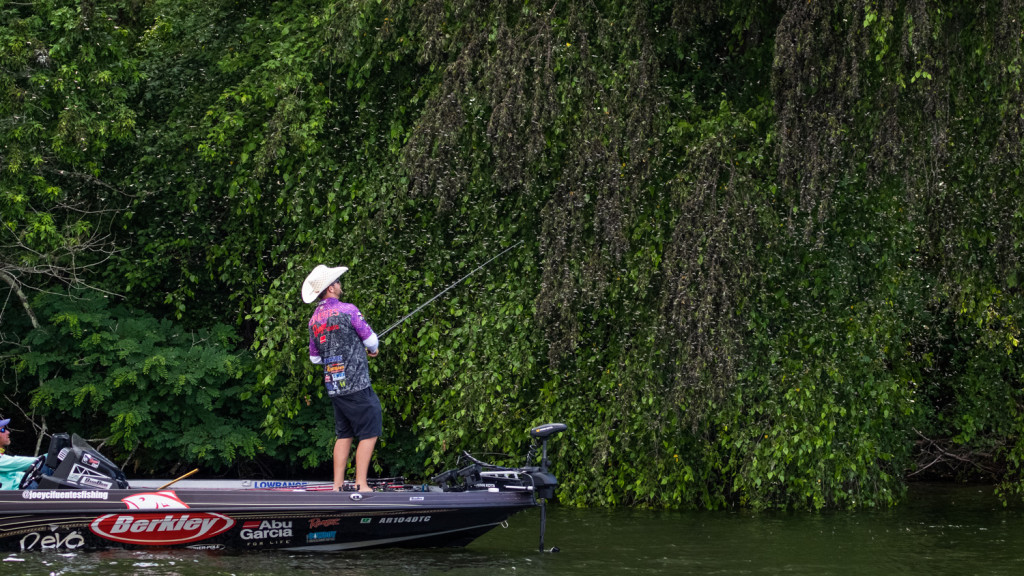
Adult mayflies only live for about 24 hours out of the water, but during that brief window, they can dramatically affect the prospects of catching a bunch of fish. At the Tackle Warehouse Pro Circuit Super Tournament on Lake Chickamauga, Miles Burghoff based a lot of his success on schools of bass that were related to the mayfly hatch. Joey Cifuentes also keyed on the mayfly hatch, and his strategy provides a great playbook for responding to mayfly hatches in a variety of situations.
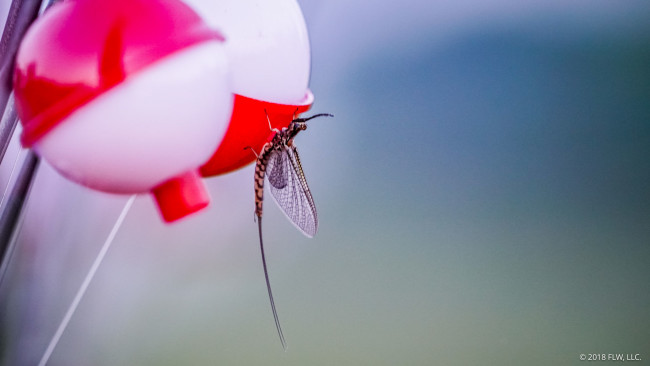
A mayfly primer
Before diving too far into how anglers can handle a mayfly hatch, it’s good to know a little of the science behind it. Mayflies live an interesting lifecycle, with about two weeks spent as an egg, a year or so spent as a nymph and then just a day or so spent as an adult. It’s the adults we see flying, clinging to trees, mating and dying by the thousands.
Though mayfly nymphs are a notable food supply for fish, the time spent out of the water is the most important stage for bass anglers. Mayflies often hatch and breed in huge numbers at once, swarming over the water and landing on whatever trees or vegetation are nearby. When that happens, it kicks the entire food chain into action, as baitfish start to key on the insects and bass start to key on whatever they can get their mouths around.
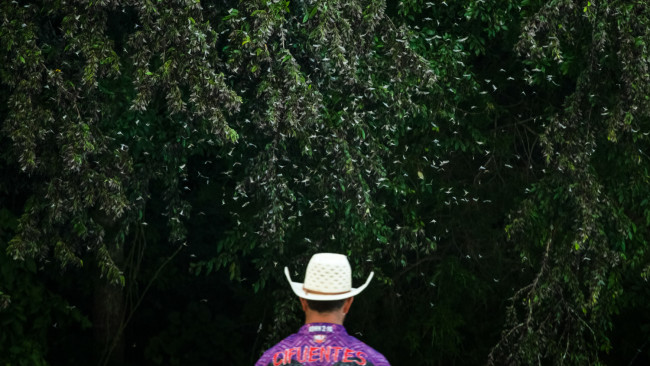
Cifuentes’s Arkansas experience
Cifuentes, who hails from Arkansas, has prior experience fishing around the mayfly hatch. Though he didn’t end up catching them on Chickamauga like he would on the Arkansas River, it proved to be a good base for him.
“On the Arkansas River, the mayfly deal is a big deal,” he says. “Whenever we have a mayfly hatch on Lake Dardanelle, that’s a go-to. The river is a little different because we have bank grass. Swimming a jig is really good, but for me, on the Arkansas River, I like throwing a frog or a popper.”
In Arkansas, the basic strategy is to target areas where there are lots of mayflies on trees or other vegetation that overhangs the water.
“When you get on banks that are just trees and there are mayflies, I throw the Berkley Bullet Pop; it’s a really good popping bait,” says Cifuentes. “When I fish on banks with grass and trees, I throw a popping frog. Topwater is the main deal, typically.
“You’ve got to have the overhanging trees,” Cifuentes emphasizes. “That’s where they’re at, is in the trees. But, if you get that mix of grass and overhanging trees, it’s just perfect. There’s more cover for the bass to be hanging in. You can’t beat it.”
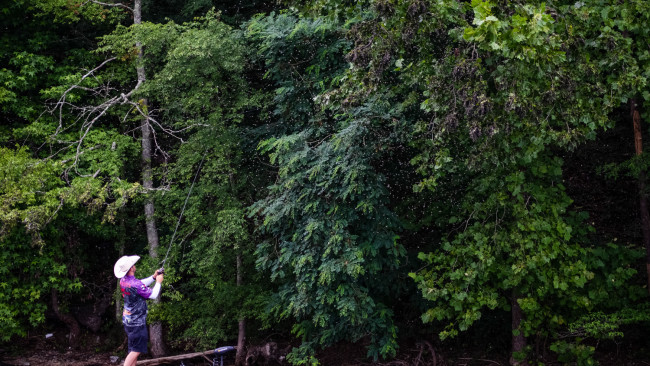
The Chickamauga tournament strategy
In the Super Tournament on Chickamauga, Cifuentes started each morning with a drop-shot on a ledge to get some fish in the boat. Then, he turned to the mayfly bite, swimming a jig around wood (mostly) on banks with overhanging vegetation on the main river.
Cifuentes would go down the banks in the morning, fishing and occasionally casting his jig into the trees to shake down mayflies. Then, he’d return to many of the same banks in the afternoon.
“You couldn’t just go down any bank with mayflies,” says Cifuentes. “I caught some fish shallow, on some really shallow stuff, but there needed to be somewhat deep water close. That kind of medium bank was best, and if you had some chunk rock mixed in, that was great. The majority of the fish I caught were on wood, just hanging around it as an ambush point.”
Unlike Burghoff, who targeted fish on bluffs with trees close to the water, Cifuentes fished more normal-looking banks.
“The first day, I had one place down by Chester Frost that had rock on it,” says Cifuentes. “I ended up catching a couple smallmouth there too that were almost 18 inches. The first day I caught a 5-pounder swimming a jig there. I was using a 9/16-ounce one there and swimming it deeper, down near the rock, maybe 2 to 3 foot down, and not right up near the surface.”
While Cifuentes re-fishing his pre-shaken areas in the afternoon was undoubtably a good thing, the afternoon helped him for other reasons as well. Because he was targeting wood cover most of the time, the shorter shade lines had fish positioned tighter to the banks and to the cover in the afternoon, making it a bit easier for him to pick them off with his jig.
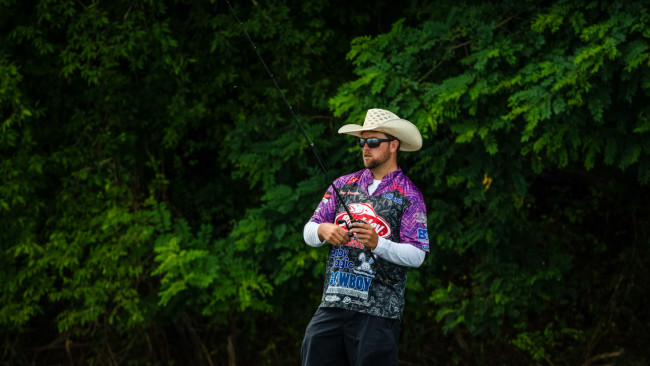
Chickamauga tackle
While Cifuentes usually turns to a topwater for mayfly hatches, he used a swim jig at Chickamauga. It allowed him to fish wood cover very efficiently and imitate a bluegill perfectly.
His swim jig of choice was an Okeechobee craw-colored Jewel Baits Magnum Casting Jig in the 7/16-ounce size that he trailered with a green pumpkin Berkley PowerBait Rocket Craw. Cifuentes pulled off the long antennae of the Rocket Craw and dipped the tips of the claws in chartreuse dye to better imitate a bluegill.
For his swim jig tackle, Cifuentes likes a 7-foot, 3-inch heavy-power Abu Garcia Fantasista Premier, a 7.3:1 gear ratio Abu Garcia Revo Premier and 20-pound-test Berkley Trilene 100% Fluorocarbon.
As a follow-up bait, Cifuentes would skip a wacky-rigged Berkley MaxScent General to fish.
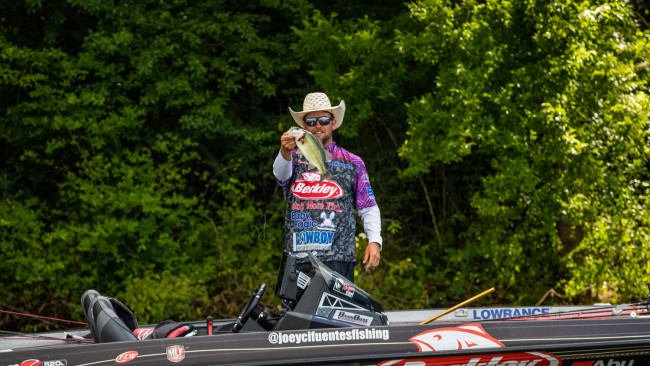
The retrieve key
Cifuentes discovered one retrieve tweak for his swim jig during the event that helped him really up his catch.
“Whenever I would pitch it under a tree, I would let it go down and then bring it up to the surface,” he says. “Especially when I got it close to the boat or I was bringing it out of a piece of wood, I caught so many fish that I saw. They would follow that jig up like it was a bream coming up to eat, and as soon as it went down, that’s when they would eat it.
“That was huge. It’s something small, but it made a huge difference. You’ve got to notice little things like that.”
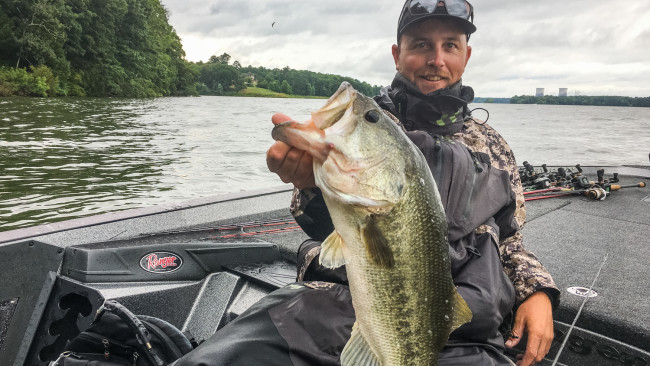
Using the wind
While knocking mayflies out of the trees in the morning was a notable part of his strategy, Cifuentes didn’t always need to make his own weather.
“I had two stretches of bank the first two days down the river where the wind was constantly hitting the trees and knocking the mayflies off,” Cifuentes says. “You didn’t have to do it. You’d just show up and the bream would be going crazy, just constantly coming up and eating the mayflies, and you would see bass coming up and eating the mayflies too. The wind was a big deal on some of those banks – I wouldn’t have to do any shaking – it would already be done for me.”

Give it a shot
Fishing a mayfly hatch can vary across the country, but the roots of the strategy Cifuentes employed at Chickamauga can be taken a lot of places. So, when there is a hatch going on, look for concentrations of mayflies, look for overhanging cover, and make sure the food chain is going. With those factors in play, you ought to be able to catch some bass.